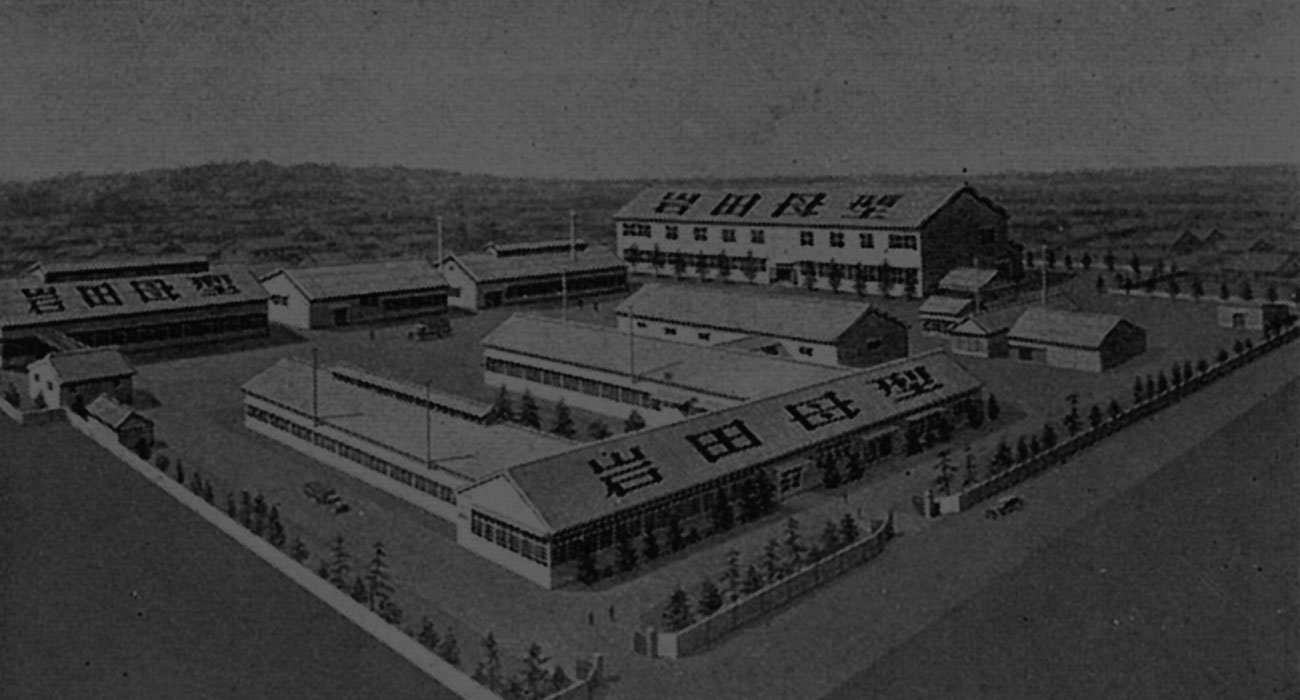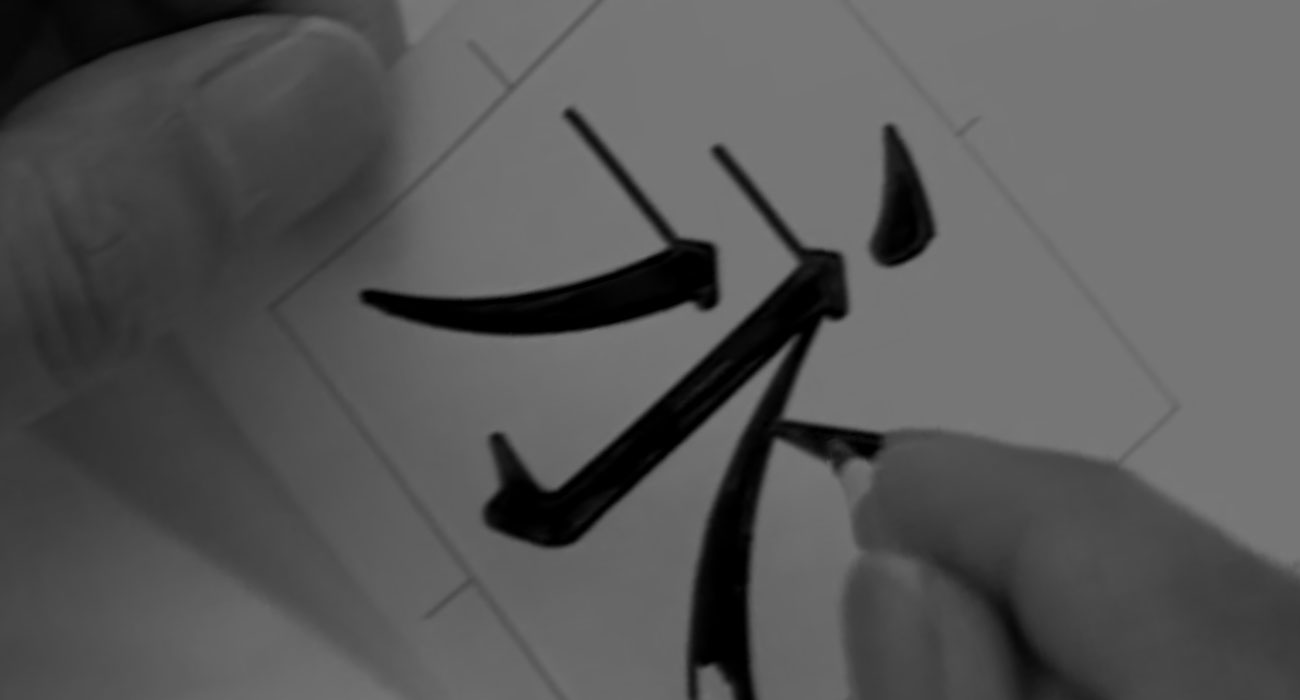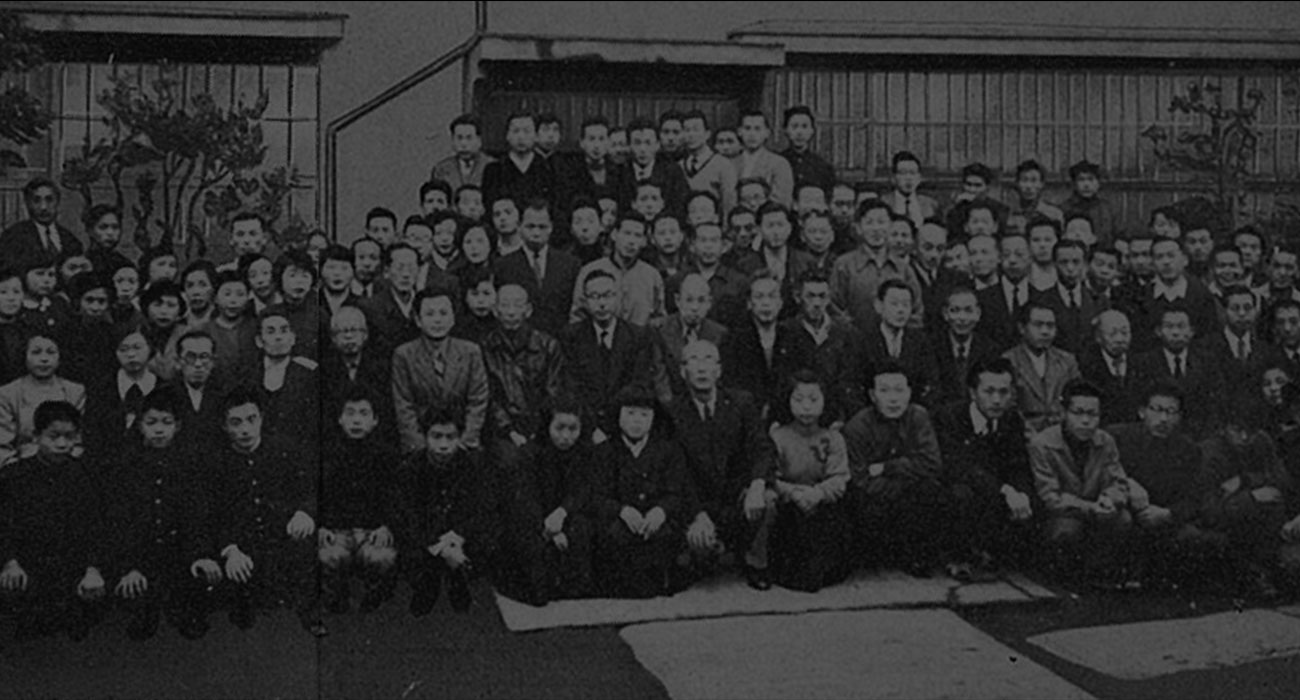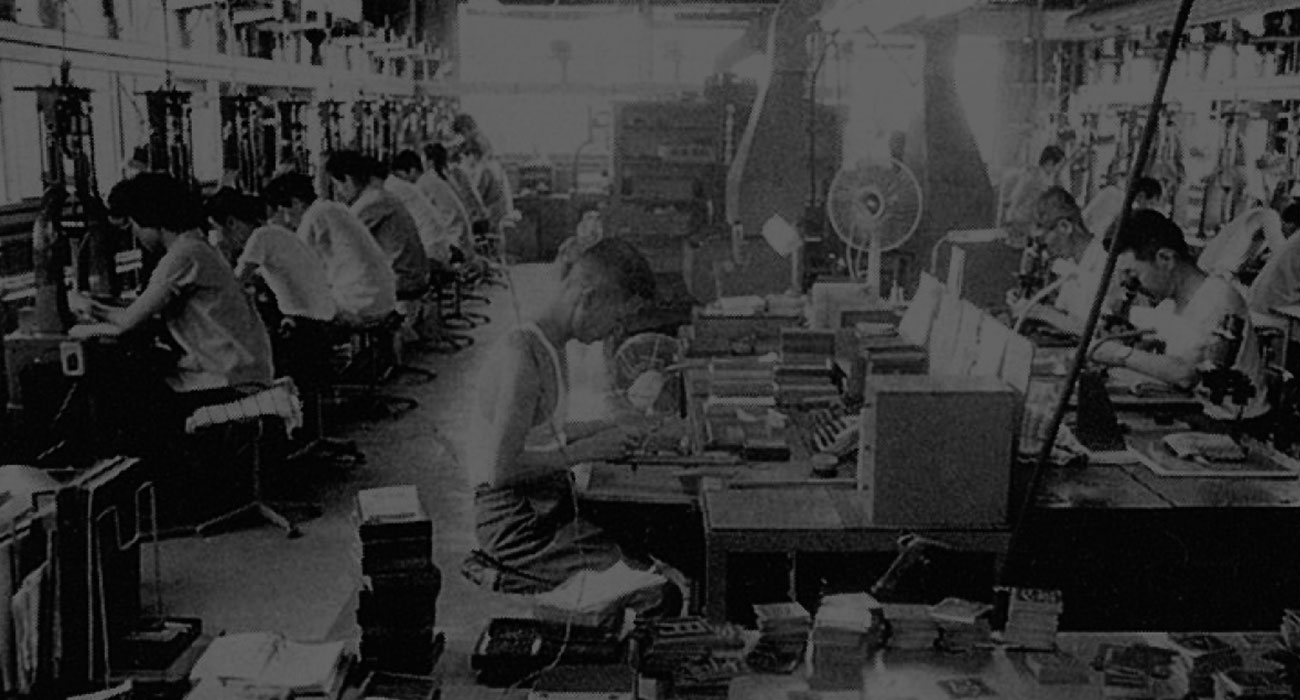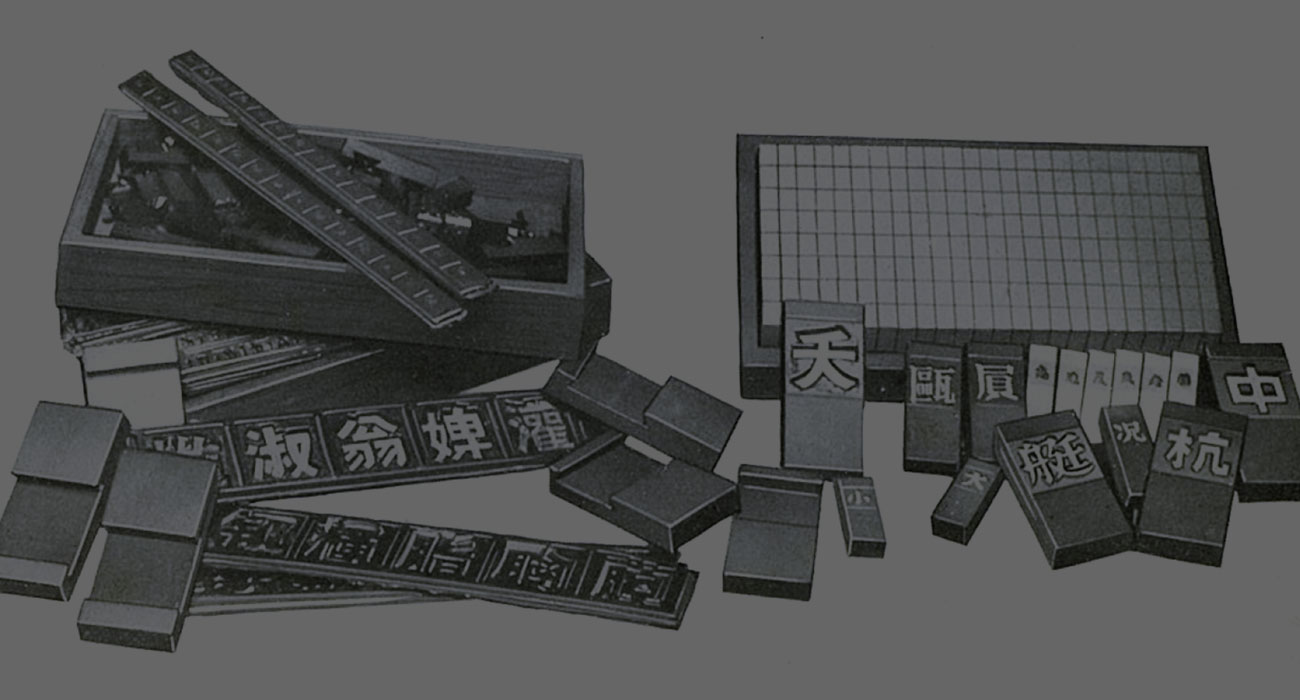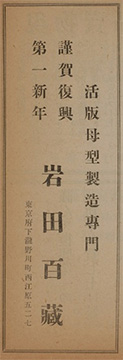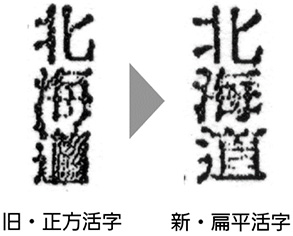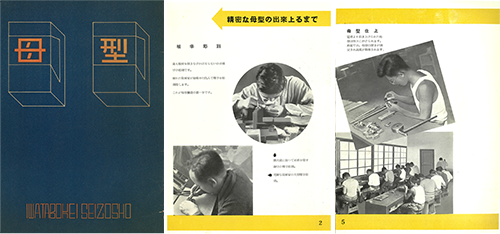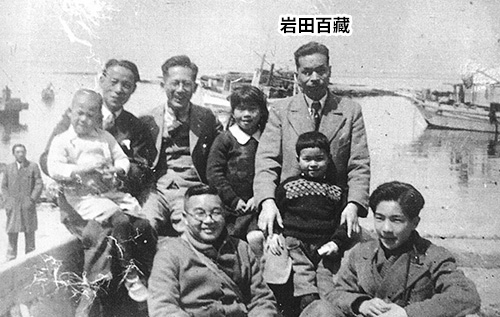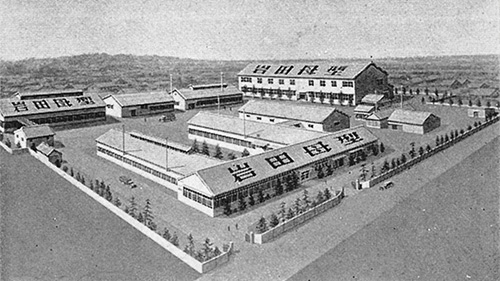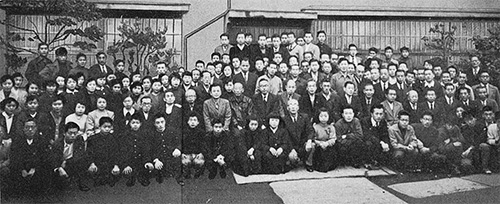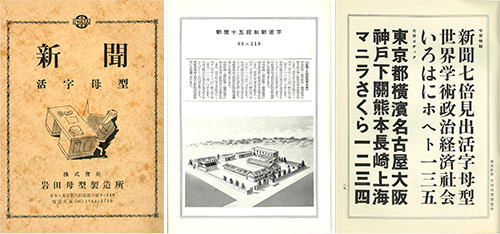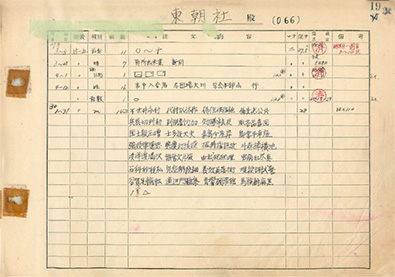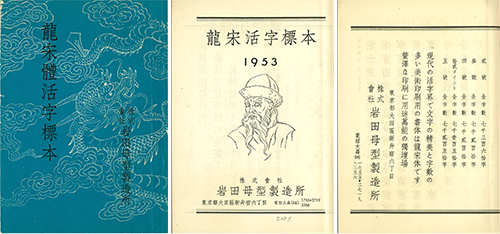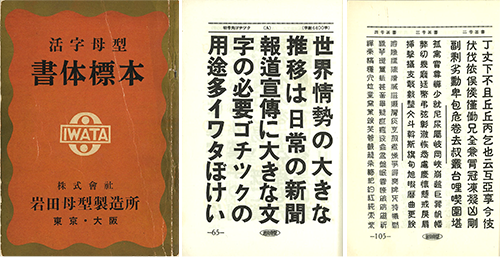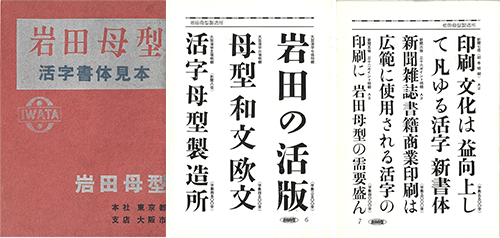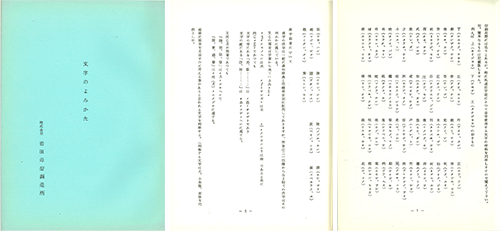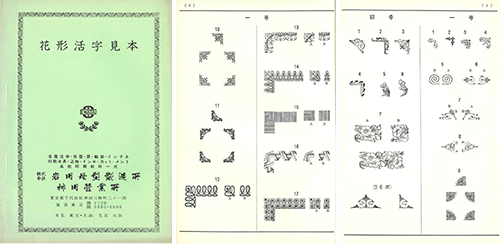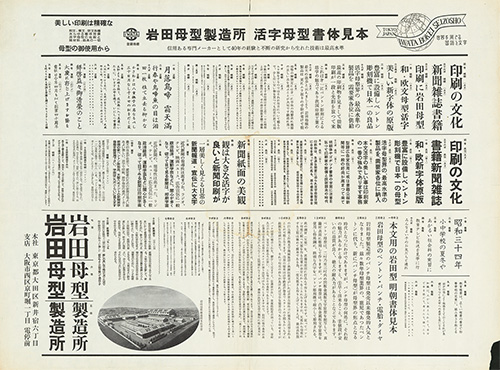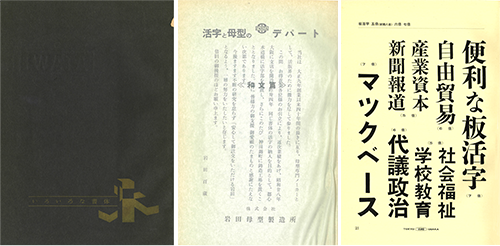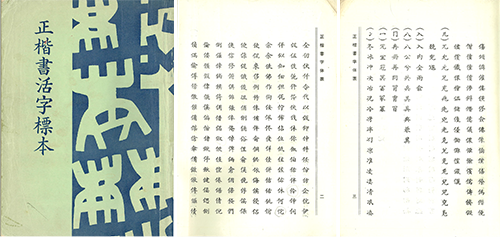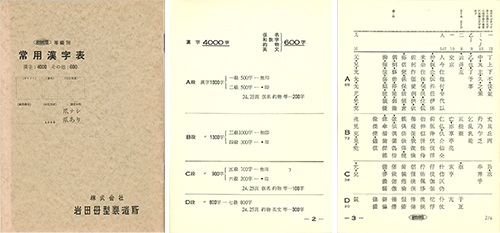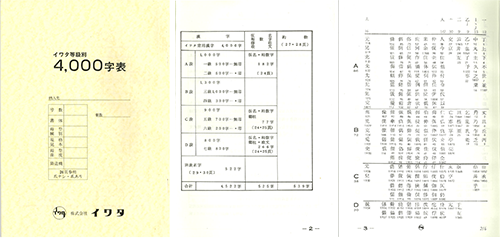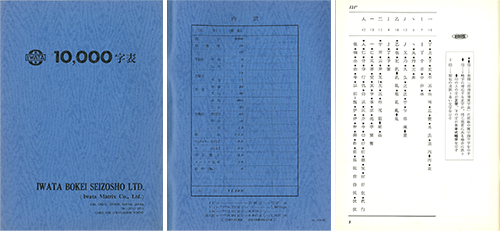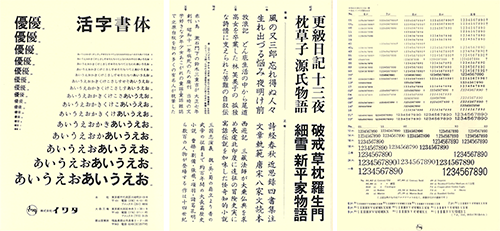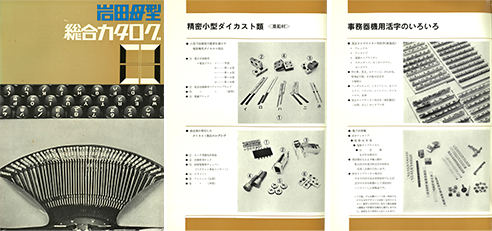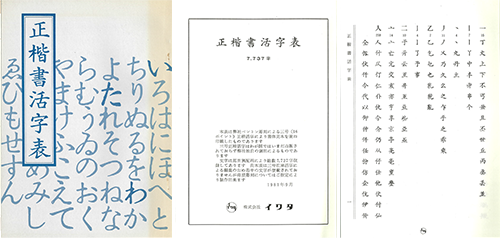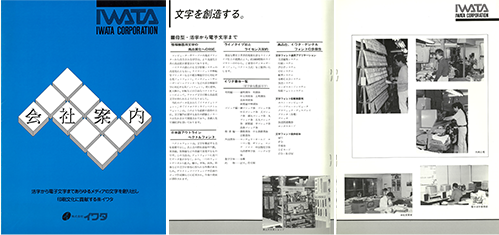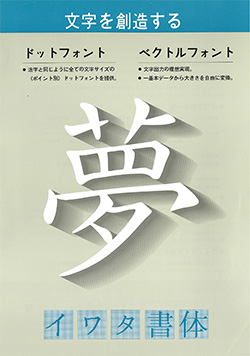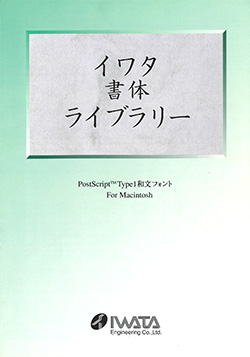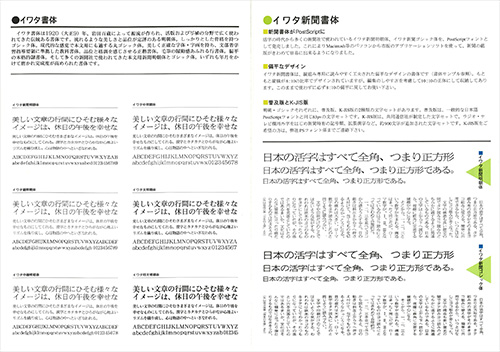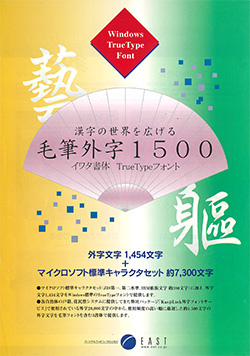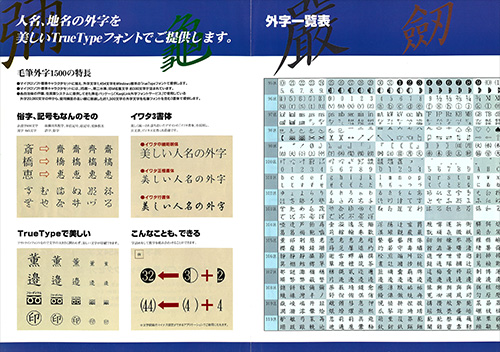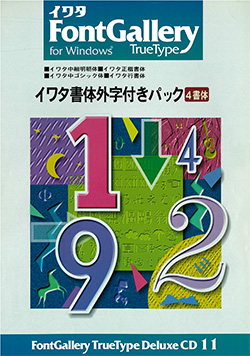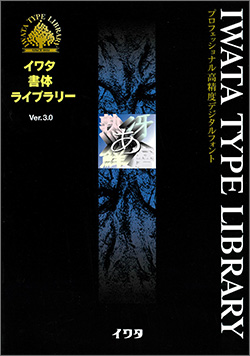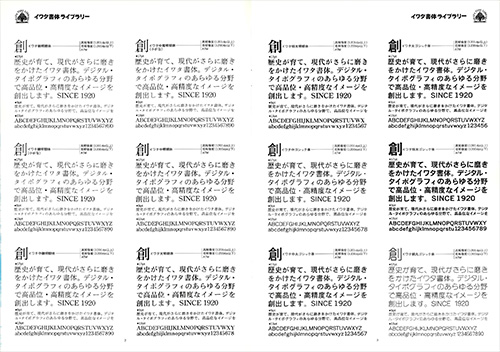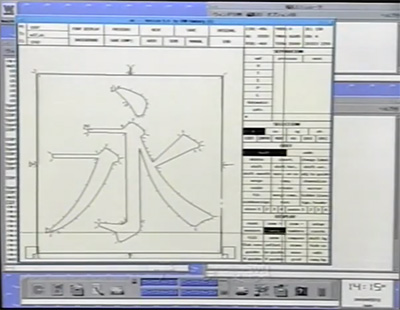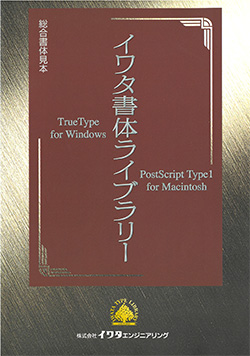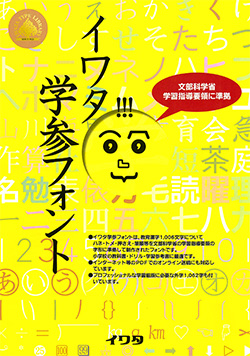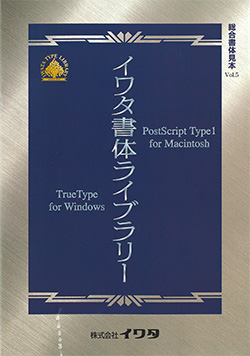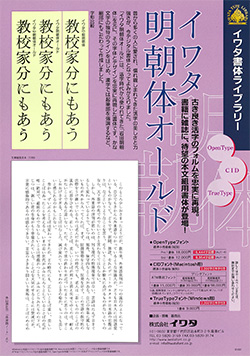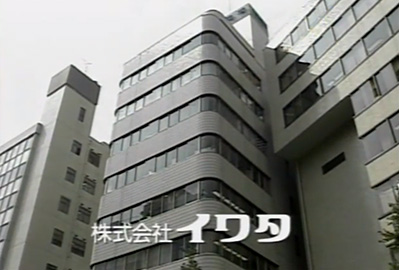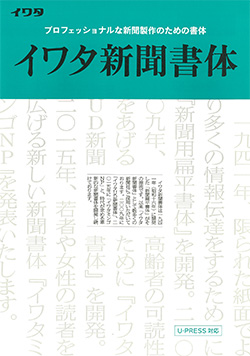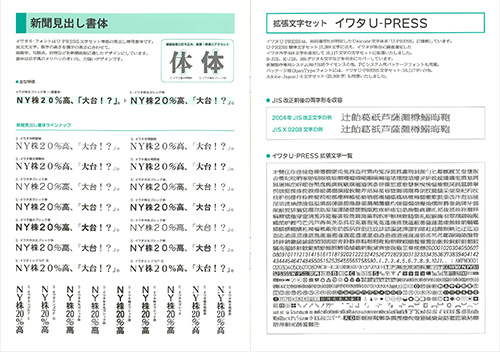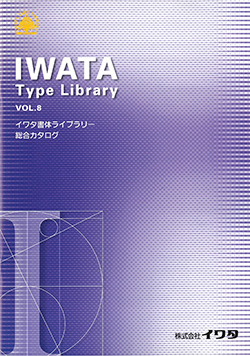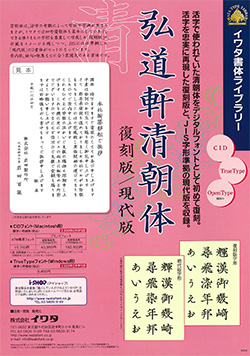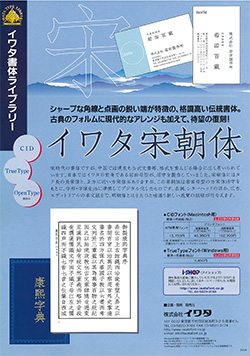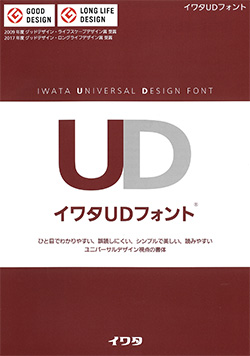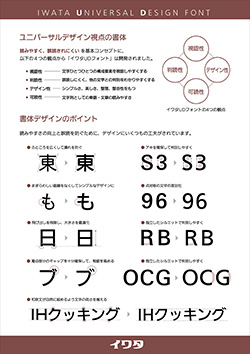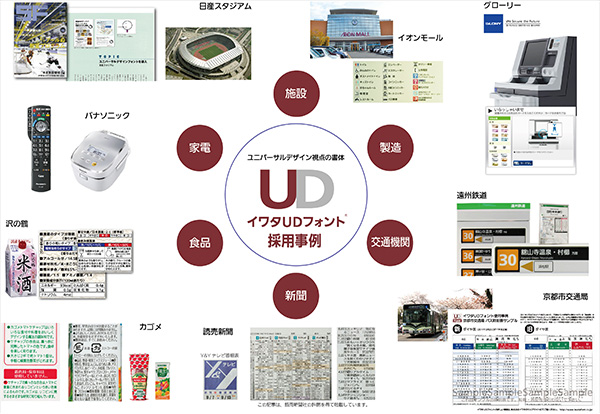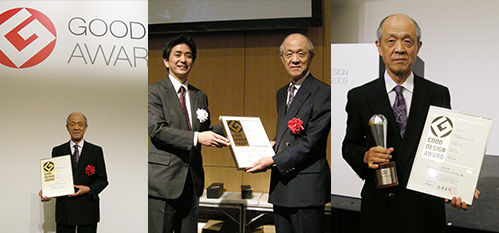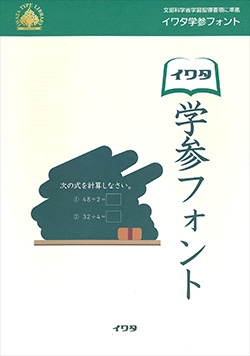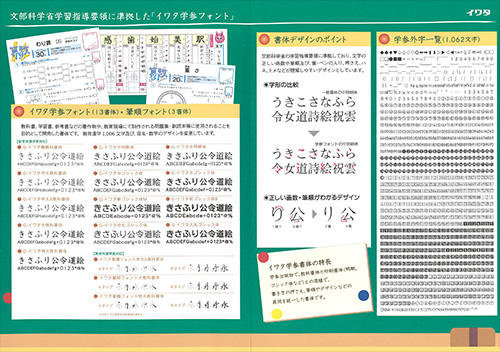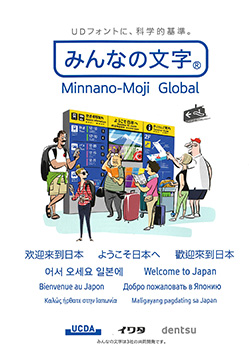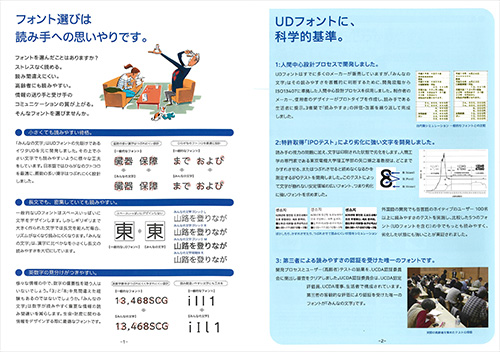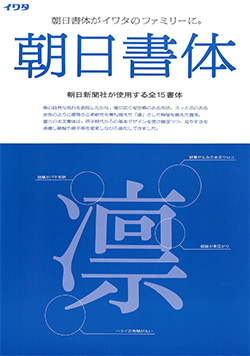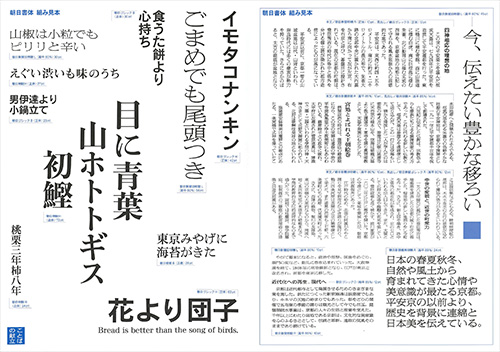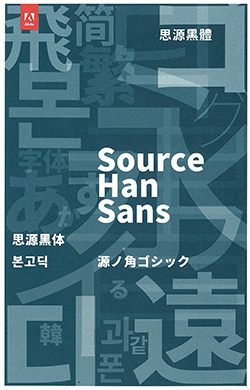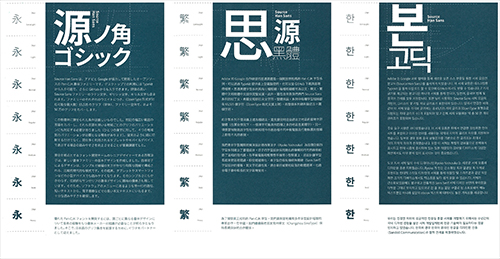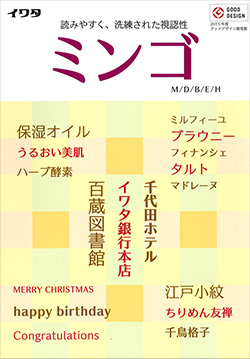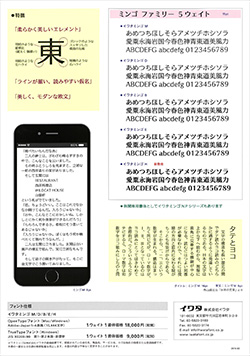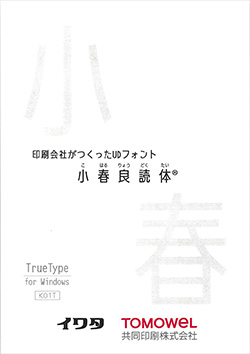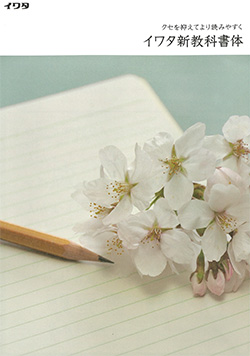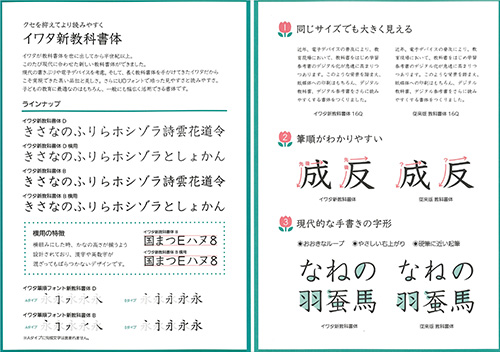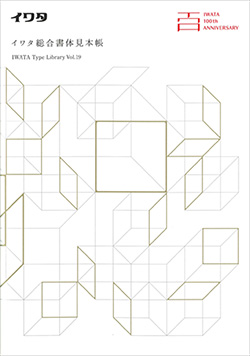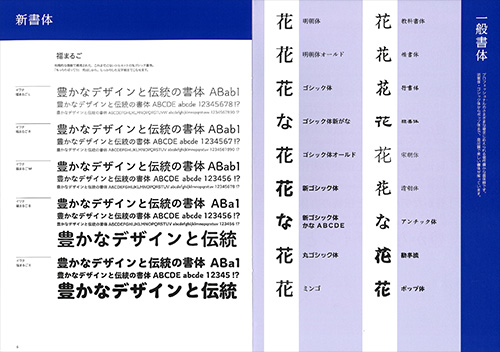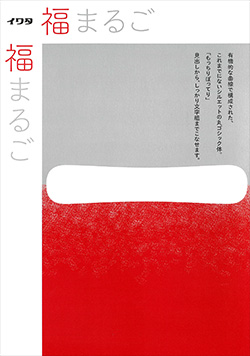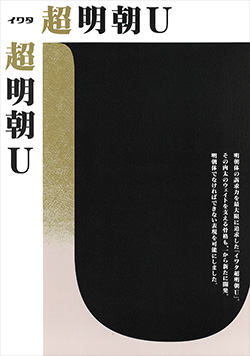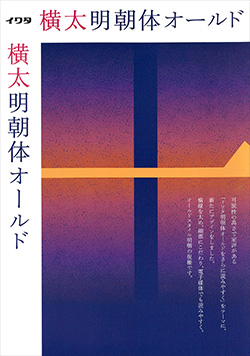Message from President
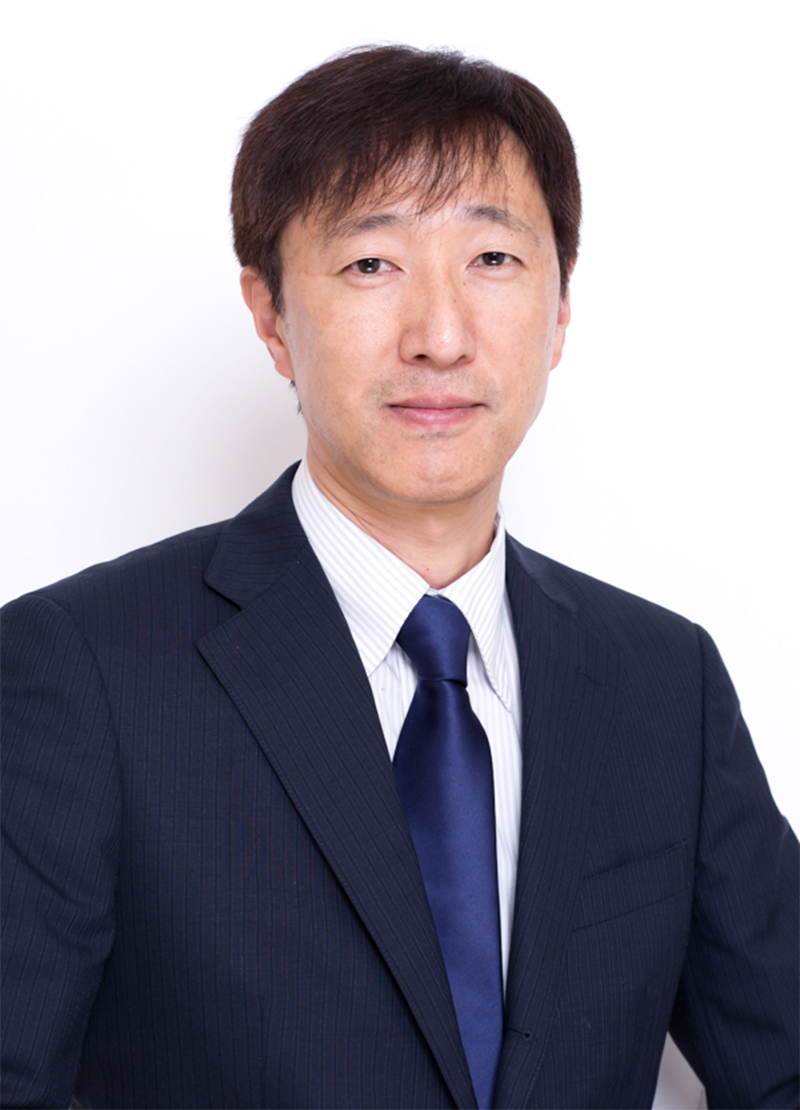
Akira Mizuno, President
In November 2020, Iwata celebrates its centennial anniversary.
This historic milestone would never have been accomplished without your continued support and patronage.
Over a hundred years, Iwata has undergone many ups and downs not only due to technological shifts in writing and printing but also because of difficult circumstances, including earthquake disasters, war, oil crisis, the asset-inflated economy collapse.
However, each time facing a difficult challenge, our people managed to find a way to overcome it with their forward-looking idea, technological innovation, relentless efforts and passion.
Bearing in mind that all the fonts Iwata has produced are the crystallization of such forward-looking efforts, we will together continue to put our utmost effort into font production.
Iwata still has a lot on its plate, including collaboration with clients, revival of analog typefaces through digitalization, incorporation of new font technologies, further increase in font variations, and creation of ideal fonts that no one has ever seen.
To make these ambitious ideas a reality, we will progress together hand-in-hand with our present and future clients in the coming century as well.
Thank you very much for your continuing support and guidance.
History of Iwata
- May: The first May Day rally in Japan
- September: Great Kanto Earthquake
- March: The establishment of Manchurian State was declared.
Developed and produced matrices for the universal casting machine made by Nippon Typewriter.
Morikawa Ryobundo cut punches of a new Socho typeface and named it Ryusotai. Its matrices were made by Iwata Matrix Co., Ltd.
- March: Tokyo Tsukiji Kappan Seizosho (Tokyo Tsukiji Type Foundry) was dissolved.
- December: Japanese Navy attacked Pearl Harbor in Hawaii, triggering the Pacific War.
- May: The Ordinance of Re-establishing Business Enterprises, based on Article 6 of the National Mobilization Law, was issued.
- Many matrix foundries were out of business by the end of the year.
- March: Great Tokyo Air Raid
- September: Signing of Instrument of Surrender, ending the Pacific War.
- May: The Constitution of Japan went into effect.
- In November, the List of Kanji for Interim Use was officially announced.
- The number of horizontal columns per newspaper page was changed to 15, each of which includes 15 characters. In response to this change, horizontally expanded type of 0.088 inch high and 0.110 inch wide was adopted.
In March, introduced two Benton engravers made by Tsugami Mfg., Co., Ltd., for the first time as a Japanese matrix manufacturer foundry.
Engraved a new horizontally expanded type for newspapers and supplied electroforming matrices to major newspapers, including the Asahi Shimbun head office in Tokyo. Released new type for katakana, hiragana and the most frequently used kanji characters, such as Chinese numerals, with Benton-engraved matrices.
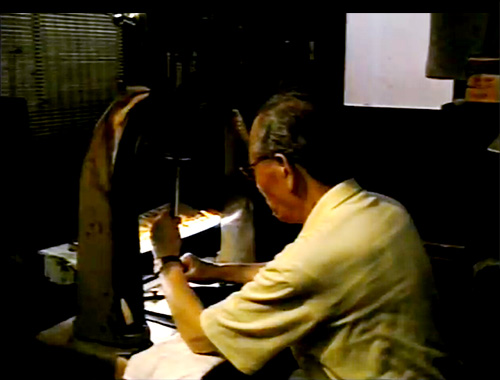
While mainly producing electroforming matrices, started developing Iwata original type in each size used for Benton-engraved matrices.
Received orders from Hitachi Printing of a total of 20,000 Benton-engraved matrices of Mincho and Gothic types in 8, 9 and 10 point each.point.
Received an order from Tosho Printing Co., Ltd. which planned to equip its Hara factory in Numazu, Shizuoka, with type in all point sizes. The order totaled 200,000 Benton-engraved matrices of Mincho, Gothic and textbook typefaces as well as Latin typefaces in 17 point-sizes ranging from Points 3.5 to 28.
- October: Tokyo Olympic Games
- Oil crisis
- October: Announcement of the List of Kanji for Common Use
- March: Opening of the Seikan Tunnel
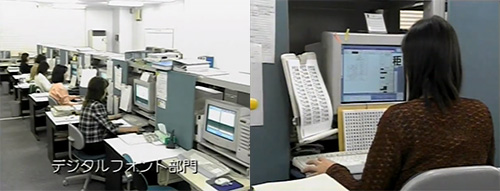
- Windows3.1
- Windows 95
- Great Hanshin-Awaji Earthquake
- Mac OS X v10.0
- JIS X 0213:2004
- November: Announcement of the revised List of Kanji for Common Use
Minnano-Moji was co-developed by UCDA, which develops and promotes standards for easy-to-understand, and Iwata under the supervision of Dr. Hiroyuki Yaguchi, Associate Professor of Tokyo Denki University.
Released Asahi Shimbun Font.
Renowned for being easy to read and sophisticated, Asahi Shimbun Font has had significant influence not only in the newspaper industry but also in the design world in general. However, the font was used only by the Asahi Shimbun and not available to the public. In response to a growing demand for the font among many publishers and designers, Iwata launched exclusive sales with the full cooperation of the Asahi Shimbun.
Iwata UD Font family won the Good Design Award's Long-life Design Award.
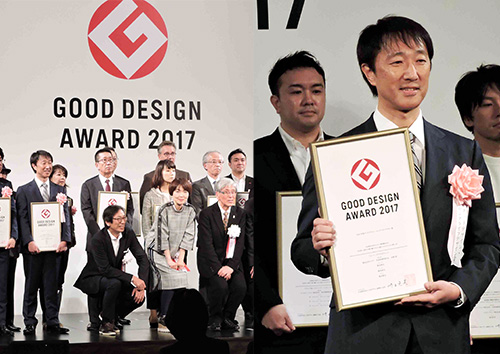
President Akira Mizuno receiving the award
Kyodo Printing Co.,Ltd. developed this font based on Iwata UD Gothic through a joint research to develop small but easy-to-read UD fonts with Professor Koichi Oda of Tokyo Woman's Christian University, who invented a testing method for readability.
In commemoration of the Company's 100th anniversary, released a memorial issue of the catalog.
Which lists Iwata Fuku-Marugo, Cho-Mincho and Yokobuto Mincho Old typefaces
Under the supervision of a renowned manga artist Tsutomu Nihei and based on his original design, Iwata developed and marketed the corporate type of a fictional company Toa Industries which appears in his multiple works.
Passion for a Single Letter
This film was made in 2001.
Going forward, Iwata will continue to explore new possibilities of fonts and offer unique products of good quality.
